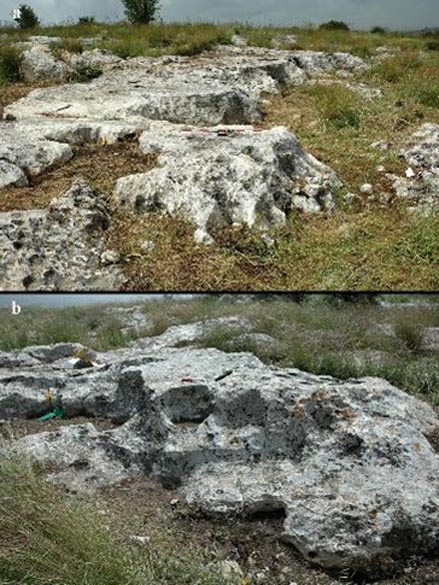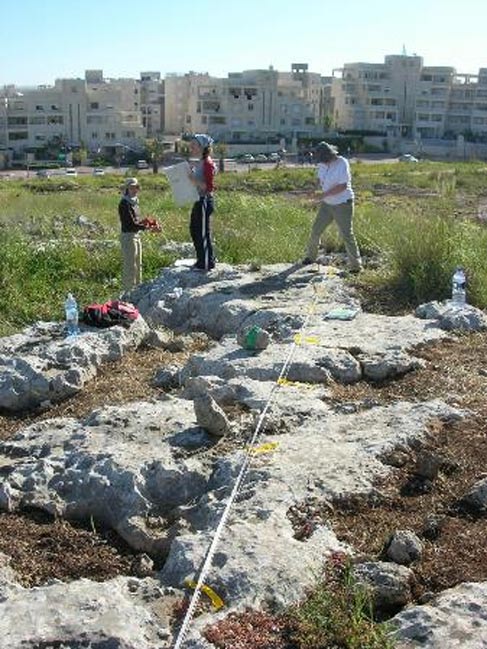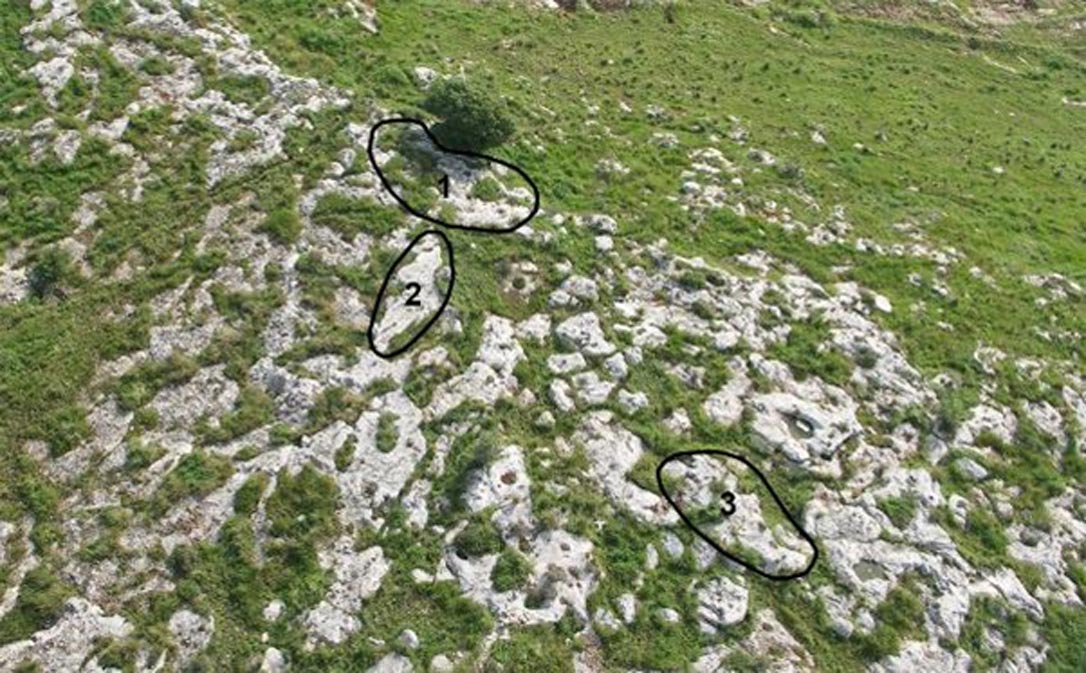Ancient Quarry Proves Human Impact on Landscape
Archaeologists from the Hebrew University of Jerusalem uncovered in central Israel the earliest known Neolithic quarry in the southern Levant, dating back 11,000 years. Finds from the site indicate large-scale quarrying activities to extract flint and limestone for the purpose of manufacturing working tools.
In a research paper published in the journal PLOS One, a team of archeologists, led by Dr. Leore Grosman and Prof. Naama Goren-Inbar from the Institute of Archeology at the Hebrew University of Jerusalem, showed how inhabitants of the Neolithic communities changed their landscape forever.
"Humans became more dominant and influential in their terrestrial landscape and Kaizer Hill quarry provides dramatic evidence to the alteration of the landscape," said Dr. Grosman.
Kaizer Hill quarry is the first of its age, size and scope to be revealed in the southern Levant, where the Neolithic culture is believed to have begun and farming communities have developed. The introduction of farming is widely regarded as one of the biggest changes in human history, and "domestication" of the landscape was a significant process in the changing approach to nature.

A cluster of cupmarks found at the site. (Leore Grosman, Naama Goren-Inbar)
The quarry is assigned to the Neolithic Pre-Pottery Neolithic A (PPNA) culture, one of the incipient cultural stages in the shift from a hunter-gatherer to a farming way of life.
The gradual transition to agricultural subsistence, when people learned how to produce their food rather than acquiring it, was accompanied by a changing attitude to 'landscape' and the practices of using the surrounding nature for the benefit of humans.
- Cave of Zedekiah: The Secret Grotto of Jerusalem
- New study finds ancient humans butchered elephants with stone tools 500,000 years ago

Step-like morphology of the quarrying front on the rocks (Gabi Laron)
"The economic shift, from hunter-gatherers to agriculture, was accompanied by numerous changes in the social and technological spheres. Various quarrying marks including cup marks showed that the cutting of stones was done in various strategies, including identifying potential flint pockets; creating quarrying fronts on the rocks; removing blocks to allow extraction of flint; creating areas for quarrying dump; and using drilling and chiseling as a primary technique for extracting flint," said Prof. Goren-Inbar.
Researchers suggested a new interpretation to bedrock damage markings on the site of Kaizer Hill quarry, located on a 300 meter-high hill on the outskirts of the sprawling city of Modi'in, some 35 km west of Jerusalem.

Hebrew University archaeologists analyze cup marks on rocks at Kaizer Hill quarry. (The Hebrew University of Jerusalem)
"At the peak of the hill we found damaged rock surfaces, providing evidence to quarrying activity aimed at extracting flint nodules and exploiting the thick layer of caliche (a sedimentary rock locally known by the Arabic term Nari)," said Dr. Leore Grosman.
"The ancient people at the time carved the stone with flint working tools (for example axes). This suggestion differs from the commonly held view, which considers all features defined as cup marks to be devices that were primarily involved in a variety of grinding, food preparation, social or even symbolic activities," researchers wrote in their paper.

Flint tools found at the site: 1–3 retouched tools; 4 burin; 5–6 awls; 7–9 notched tools. (Leore Grosman, Naama Goren-Inbar)
Featured image: Aerial view of Kaizer Hilltop with three sampled rock surfaces marked in black circles Credit: The Hebrew University of Jerusalem
The article ‘Ancient quarry proves human impact on landscape’ was originally published on Science Daily.
Source: Hebrew University of Jerusalem. "Ancient quarry proves human impact on landscape." ScienceDaily. ScienceDaily, 29 March 2016.




















Comments
I've seen several articles questioning the reason for the "cupmarks" at various petroglyph sites. The cupmarks are not meant as any sort of symbolism, but rather are the mortar portion of a mortar/pestle. (The pestle typically is missing.) There are hundreds of similar stones around the North American plains where natives sat for centuries at various camps grinding maize (and other materials) on similar large stones.
Typically, a group of women would congregate with their pestles and grain at the grindstone in the morning, and gossip while they processed the grain. Notice that most of the cups have a small ledge where one would kneel or sit sideways while grinding away. More mortars mean more women can grind, and of course not all pestles are made the same, which results in slight variations in the cupmarks.
Grain is not the only thing ground in prehistory, of course. Even the neanderthals used oak bark to tan hides, and tree nut hulls are rich sources of tannin, which may account for the black stains. Perhaps the tannin bearing material was charred and later fragmented to facilitate easier grinding. Tannin stains can last seemingly forever. Of course, someone could have come along give or take a 1000 years, and burned pine resin in the cups as well for whatever reason.